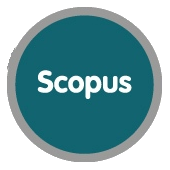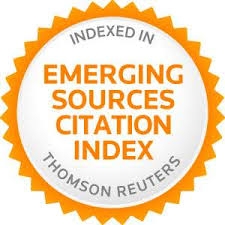Predicción del nivel de dificultad en una prueba estandarizada de comprensión de lectura: aportes desde la psicometría y la psicología cognitiva
Resumen
Palabras clave
Referencias
Attoresi, H.F., Picón, J., Abal, F., Aguerri, M. & Galibert, M.S. (2009). Aplicación del modelo LLTM de Fisher al análisis de las fuentes de dificultad de ítemes de razonamiento deductivo. Interdisciplinaria, 26(1), 77-93.
Baker, F. (1993). Sensitivity of the Linear Logistic Test Model to Misspecification of the Weight Matrix. Applied Psychological Measurement, 17(3), 201-210. doi: 10.1177/014662169301700301
http://dx.doi.org/10.1177/014662169301700301
Belinchón, M., Igoa, J. & Rivière, A. (1998). Psicología del lenguaje: Investigación y teoría. Espa-a: Editorial Trotta.
Bond, T. & Fox, C. (2001). Applying the Rasch Model: Fundamental Measurement in the Human Sciences. Estados Unidos: Lawrence Erlbaum Associates, Inc.
Borsboom, D., Mellenbergh, G.J. & Heerden, J. (2004). The Concept of Validity. Psychological Review, 111(4), 1061–1071. doi: 10.1037/0033-295X.111.4.1061
http://dx.doi.org/10.1037/0033-295X.111.4.1061
Chen, Y., MacDonald, G. & Leu, Y. (2011). Validating Cognitive Sources of Mathematics Item Difficulty: Application of the LLTM to Fraction Conceptual Items. The International Journal of Educational and Psychological Assessment, 7(2), 74-93. Recuperado de https://sites.google.com/site/tijepa2012/home
Clark-Carter, D. (2004). Quantitative Psychological Research. Estados Unidos: Psychology Press.
Cortada de Kohan, N. (2003). Posibilidad de integración de las teorías cognitivas y la psicometría moderna. Revista Argentina de Neuropsicología, 1, 8-23.
Cronbach, L.J. & Meehl, P.E. (1955). Construct Validity in Psychological Test. Psychological Bulletin, 52(2), 281-302.
http://dx.doi.org/10.1037/h0040957
Daneman, M. & Hannon, B. (2001). Using Working Memory Theory to Investigate the Construct Validity of Multiple-Choice Reading Comprehension Tests Such as the SAT. Journal of Experimental Psychology: General, 130(2), 208-233.
http://dx.doi.org/10.1037/0096-3445.130.2.208
Davey, B. (1988). Factors Affecting the Difficulty of Reading Comprehension Items for Successful and Unsuccessful Readers. The Journal of Experimental Education, 56(2), 67-76.
http://dx.doi.org/10.1080/00220973.1988.10806468
De Boeck, P. & Wilson, M. (2004). Explanatory Item Response Models: A Generalized Linear and Nonlinear Approach. NY: Springer.
http://dx.doi.org/10.1007/978-1-4757-3990-9
DeMauro, G., Merritt, A. & Adams, R. (1994). Delimiting the Verbal Domain (Research Report RR-94-34). Princeton, NJ: Educational Testing Service.
Drum, P.A., Calfee, R.C. & Cook, L.K. (1981). The Effects of Surface Structure Variables on Performance in Reading Comprehension. Reading Research Quarterly, 16(4), 486-514.
http://dx.doi.org/10.2307/747313
Embretson, S. & Daniel, R. (2008). Understanding and quantifying cognitive complexity level in mathematical problem solving items. Psychology Science Quarterly, 50(3), 328-344.
Embretson, S. E. & Wetzel, D. (1987). Component Latent Trait Models for Paragraph Comprehension Tests. Applied Psychological Measurement, 11(2), 175-193. doi: 10.1177/014662168701100207
http://dx.doi.org/10.1177/014662168701100207
Embretson, S. E. (1996). The New Rules of Measurement. Psychological Assessment, 8(4), 341-349.
http://dx.doi.org/10.1037/1040-3590.8.4.341
Embretson, S. E. (2010). Cognitive Design Systems: A Structural Modeling Approach Applied to Developing a Spatial Ability Test. En S. Embretson (Ed.), Measuring Psychological Constructs: Advances in Model-Based Approaches (pp. 247-271). Washington, DC: American Psychological Association.
Embretson, S.E. & Gorin, J. (2001). Improving Construct Validity with Cognitive Psychology Principles. Journal of Educational Measurement, 38(4), 343-368. doi: 10.1111/j.1745-3984.2001.tb01131.x
http://dx.doi.org/10.1111/j.1745-3984.2001.tb01131.x
Embretson, S.E. (1989). Latent Trait Models as an Information-Processing Approach to Testing. International Journal of Educational Research, 13(2), 189-203. doi:10.1016/0883-0355(89)90006-2
http://dx.doi.org/10.1016/0883-0355(89)90006-2
Escudero, I. (2010). Las inferencias en la comprensión lectora: una ventana hacia los procesos cognitivos en segundas lenguas. Revista Nebrija de Lingüística Aplicada, 7(4), 1-32. Recuperado de http://www.nebrija.com/revista-linguistica/
Farr, R., Pritchard, R. & Smitten, B. (1990). A Description of What Happens When an Examinee Takes a Multiple-Choice Reading Comprehension Test. Journal of Educational Measurement, 27(3), 209-226. doi: 10.1111/j.1745-3984.1990.tb00744.x
http://dx.doi.org/10.1111/j.1745-3984.1990.tb00744.x
Fischer, G. (1997). Unidimensional Linear Logistic Rasch Model. En W. Van Der Linden y R. Hambleton, Handbook of Modern Item Response Theory. New York: Springer-Verlag.
Fisher, G. H. (1973). The Linear Logistic Test Model as an Instrument in Educational Research. Acta Psychologica, 37, 359-374. doi: 10.1016/0001-6918(73)90003-6
http://dx.doi.org/10.1016/0001-6918(73)90003-6
Freedle, R. & Kostin, I. (1991). The Prediction of SAT Reading Comprehension Item Difficulty for Expository Prose Passages (Research Report RR-91-29). Princeton, NJ: Educational Testing Service.
Freedle, R. & Kostin, I. (1992). The Prediction of GRE Reading Comprehension Item Difficulty for Expository Prose Passages for each of Three Item Types: Main Ideas, Inferences and Explicit Statements (GRE Board Report No. 87-1OP). Princeton, NJ: Educational Testing Service.
Gilbert, M.S., Picón, J.C., Lozzia, G.S., Aguerri, M.E. & Attorresi, H.F. (2010). Componentes de dificultad de ítems para la evaluación de operaciones lógicas / Una aplicación del modelo LLTM. SUMMA Psicológica UST, 7(1), 3-14.
Gilhooly, K. (2004). Working Memory and Reasoning. En J. Leighton y R. Sternberg (Eds.), The Nature of Reasoning (pp. 49-77). Estados Unidos: Cambridge University Press.
Gorin, J. S. (2007). Reconsidering Issues in Validity Theory. Educational Researcher, 36(8), 456-462. doi: 10.3102/0013189X07311607
http://dx.doi.org/10.3102/0013189X07311607
Gorin, J.S. & Embretson, S.E. (2006). Item Difficulty Modeling of Paragraph Comprehension Items. Applied Psychological Measurement, 30(5), 394-411. doi: 10.1177/0146621606288554
http://dx.doi.org/10.1177/0146621606288554
Gorin, J.S. (2005). Manipulating Processing Difficulty of Reading Comprehension Questions: The Feasibility of Verbal Item Generation. Journal of Educational Measurement, 42(4), 351-373. doi: 10.1111/j.1745-3984.2005.00020.x
http://dx.doi.org/10.1111/j.1745-3984.2005.00020.x
Graesser, A. C., Millis, K. & Zwaan, R.A. (1997). Discourse Comprehension. Annual Review of Psychology, 48, 163-189. doi: 10.1146/annurev.psych.48.1.163
http://dx.doi.org/10.1146/annurev.psych.48.1.163
Green, K. & Smith, R. (1987). A Comparison of Two Methods of Decomposing Item Difficulties. Journal of Educational and Behavioral Statistics, 12(4), 369-381. doi: 10.3102/10769986012004369
http://dx.doi.org/10.3102/10769986012004369
Kintsch, W. & van Dijk, T. (1978). Toward a Model of Text Comprehension and Production. Psychological Review, 85(5), 363-394. doi: 10.1037/0033-295X.85.5.363
http://dx.doi.org/10.1037/0033-295X.85.5.363
Hunt, E. (2011). Human Intelligence. Estados Unidos: Cambridge University Press
Iza, M. & Ezquerro, J. (2000). Elaborative Inferences. Anales de Psicología, 16(2), 227-249.
Kintsch, W. (1998). Comprehension: A Paradigm for Cognition. NY: Cambridge University Press.
Kirsch, I. & Mosenthal. (1990). Exploring Document Literacy Underlying the Performance of Young Adults. Reading Research Quarterly, 25(1), 5-30.
http://dx.doi.org/10.2307/747985
Leroy, G., Helmreich, S. y Cowie, J.R. (2010). The influence of text characteristics on perceived and actual difficulty of health information. International Journal of Medical Informatics. Recuperado de http://web.cgu.edu/faculty/leroy/content/Papers/2010-Leroy-IJMedInform-Perceived-and-Actual-Text-Difficulty.pdf. doi:10.1016/j.ijmedinf.2010.02.002
http://dx.doi.org/10.1016/j.ijmedinf.2010.02.002
López, I. & Pita, S. (1999). Medidas de concordancia: el índice de Kappa. Recuperado de http://www.fisterra.com/mbe/investiga/kappa/kappa2.pdf
Mair, P. & Hatzinger, R. (2012). Extended Rasch Modeling: The R Package eRm [Vignette]. Recuperado de http://cran.r-project.org/web/packages/eRm/eRm.pdf
Martínez, M., Hernández, M. & Hernández, M. (2006). Psicometría. Madrid: Alianza Editorial.
Messick, S. (1995). Validity of Psychological Assessment. American Psychologist, 50(9), 741-749. doi: 10.1037/0003-066X.50.9.741
http://dx.doi.org/10.1037/0003-066X.50.9.741
Ozuru, Y., Rowe, M., O'Reilly, T. & McNamara, D. (2008). Where's the difficulty in standardized reading tests: The passage or the question? Behavior Research Methods, 40(4), 1001-1015. doi: 10.3758/BRM.40.4.1001
http://dx.doi.org/10.3758/BRM.40.4.1001
Poinstingl, H. (2009). The Linear Logistic Test Model (LLTM) as the methodological foundation of item generating rules for a new verbal reasoning test. Psychology Science Quarterly, 51(2), 123-134.
Powers, D.E. & Wilson, S. (1995). Answering the New SAT Reading Comprehension Questions without the Passages. Journal of Educational Measurement, 32(2), 105-129. doi: 10.1111/j.1745-3984.1995.tb00458.x
http://dx.doi.org/10.1111/j.1745-3984.1995.tb00458.x
Real, E., Olea, J., Ponsoda, V., Revuelta, J. & Abad, F. (1999). Análisis de la dificultad de un test de matemáticas mediante un modelo componencial. Psicológica, 20, 121-134.
Revuelta, J. & Ponsoda, V. (1998). Un test adaptativo informatizado de análisis lógico basado en la generación automática de ítems. Psicothema, 10(3), 709-716.
Ríos, G. (2011). Características del lenguaje de los jóvenes costarricenses desde la disponibilidad léxica. Espa-a: Ediciones Universidad de Salamanca.
Romero, S., Ponsoda, V. & Ximénez, C. (2008). Análisis de un test de aritmética mediante el modelo logístico lineal de rasgo latente. Revista Latinoamericana de Psicología, 40(1), 85-95.
Rupp, A., Ferne, T. & Choi, H. (2006). How Assessing Reading Comprehension with Multiple-Choice Questions Shapes the Construct: A Cognitive Processing Perspective. Language Testing, 23(4), 441-474. doi: 10.1191/0265532206lt337oa
http://dx.doi.org/10.1191/0265532206lt337oa
Sánchez, V. (s.f.). Corpus de frecuencia de uso de vocabulario en estudiantes de secundaria [datos no procesados]. Universidad de Costa Rica: Estudios de Lexicografía Hispano-Costarricense.
Sheehan, K. & Mislevy, R. (1990). Integrating Cognitive and Psychometric Models to Measure Document Literacy. Journal of Educational Measurement, 27(3), 255-272. doi: 10.1111/j.1745-3984.1990.tb00747.x
http://dx.doi.org/10.1111/j.1745-3984.1990.tb00747.x
Sheehan, K. M., & Ginther, A. (2001). What do Passage-Based Multiple-Choice Verbal Reasoning Items Really Measure? An Analysis of the Cognitive Skills Underlying Performance on the Current TOEFL Reading Section. Paper presented at the 2000 Annual Meeting of the National Council of Measurement in Education, New Orleans, LA.
Sonnleitner, P. (2008). Using the LLTM to Evaluate an Item-Generating System for Reading Comprehension. Psychology Science Quarterly, 50(3), 345-362.
Stahl, S.A. & Jacobson, M.J. (1986). Vocabulary Difficulty, Prior Knowledge, and Text Comprehension. Journal of Reading Behavior, 28(4), 309-323. doi: 10.1080/10862968609547578
http://dx.doi.org/10.1080/10862968609547578
Tabachnick, B. & Fidell, L. (2007). Using Multivariate Statistics. New York: Pearson Education.
Enlaces refback
- No hay ningún enlace refback.


